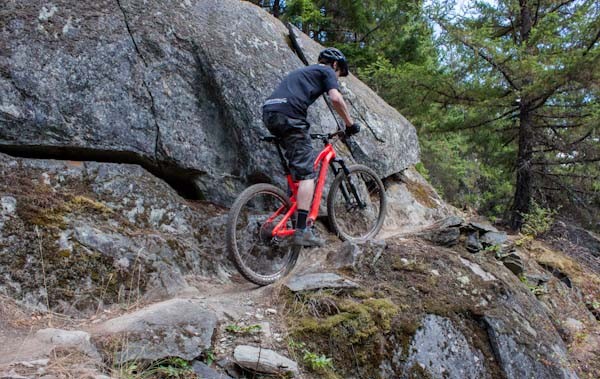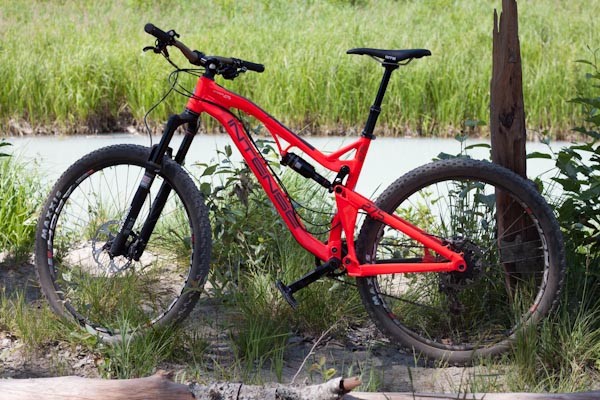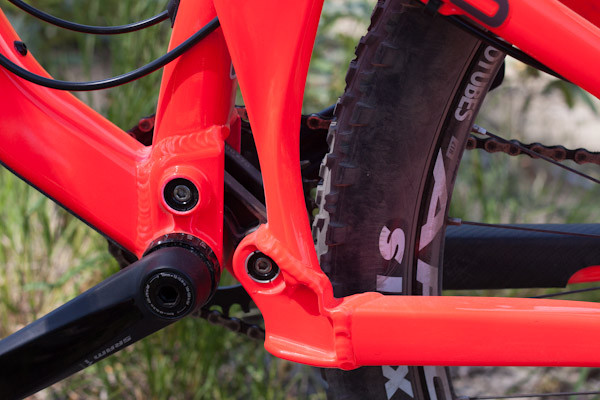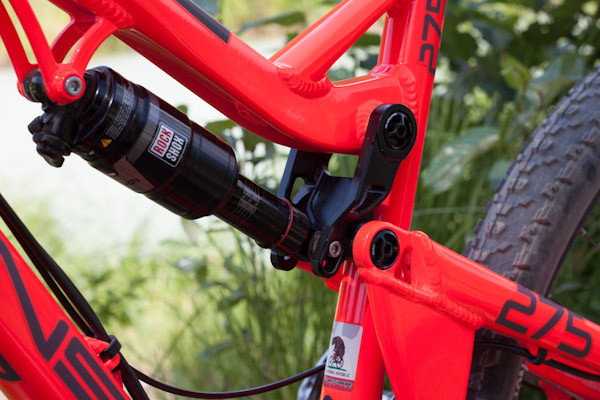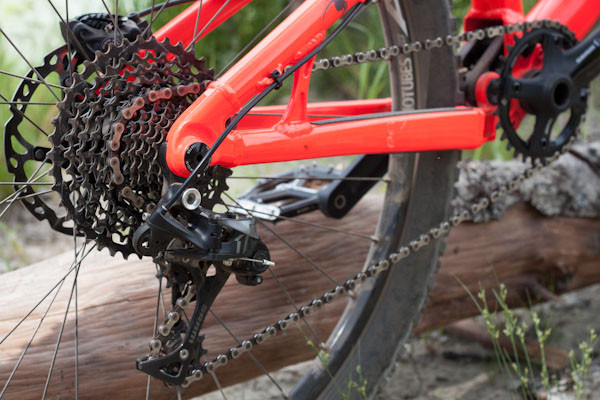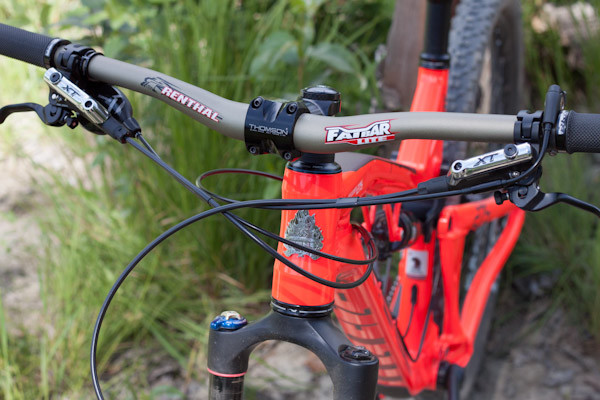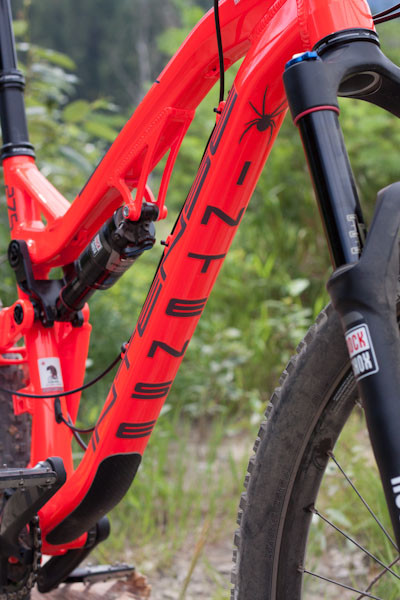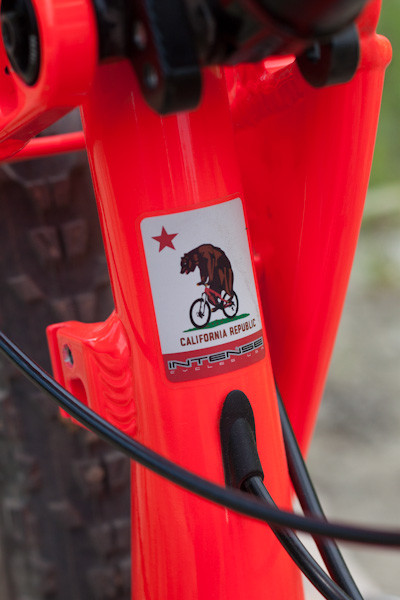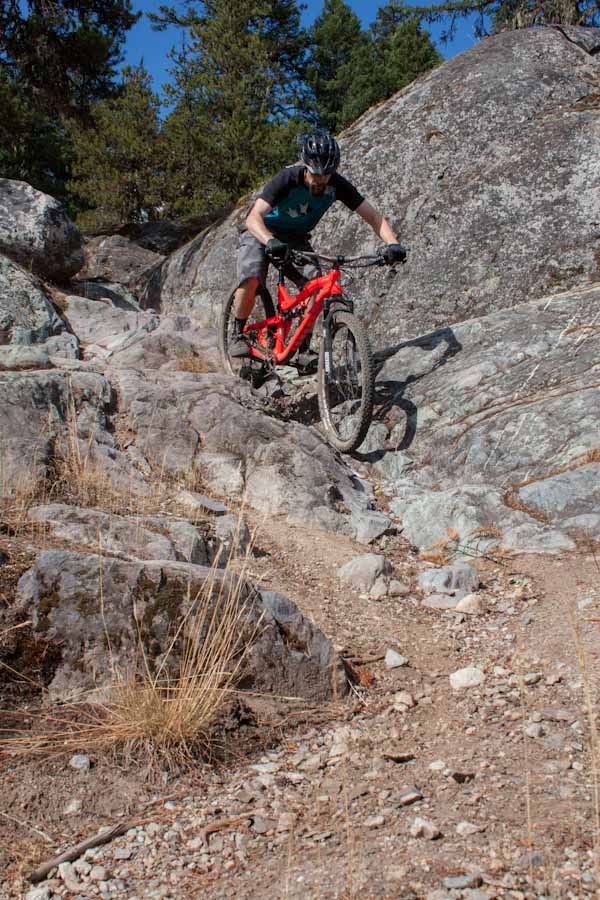Not long after ‘six-inch’ all-mountain bikes became the big thing it seemed like many manufacturers turned their focus to developing trail bikes with slack angles and less squish, but near-equal capabilities. When I found out I’d be riding an Intense Spider 27.5 this summer, I was extremely curious to test a shorter travel bike on the rough, steep terrain we have here in Pemberton, B.C.
Now the Spider isn’t the slackest bike out there, and its long, racey geometry gives it a cross-country fit and feel. That said, I was impressed with how hard I could push the Spider on tougher, more technical trails. The bike’s 130mm of travel ate up almost everything I put it down, only showing its weaknesses when I took it a bit beyond its boundaries on the roughest stuff I could find.
The Spider 27.5 is definitely an inspiring climber and a capable descender. With its agile handling, aggressive uphill abilities and balanced geometry the Spider would make a great ride for anyone who’s not riding their AM bike like a DH. Read past the break for the full review…
The Spider’s aluminum frame is built in the USA, and even with no carbon goodies the complete bike with a pair of Spank Spike pedals weighed in at 30.24lbs. As the name suggests, the Spider 27.5 rolls on 650B wheels. Its head tube angle isn’t super slack at 67°, and with an effective seat tube angle of 72.5° the bike places you in a fairly forward stance. This certainly pays off when climbing, yet the well balanced Spider doesn’t feel too steep when pointed downhill. Intense designed this bike with a lengthy 597mm top tube, which fit me well (I’m about 5’10”). While this is apparently intended to complement a short stem, it came stock with a 70mm. The steering felt much more responsive with a 60mm installed.
With the unique i-BOX construction around the BB shell the Spider’s rear end measures up quite short at 419mm. The bike handles exceptionally well with predictable but very responsive steering, and the rear wheel can easily be tossed around on command. The frame’s asymmetrical 142x12mm rear end is pretty wide and although I wasn’t clipping my heels, my shoes scuffed up the seatstays on the very first ride.
If you intend to install a bottle cage on the frame, you’d better route your cables with this in mind. After setting up the bike with no intention of using a bottle, I realized if I wanted to both the internal dropper post and rear derailleur cables would have to be lengthened to make it work. The Spider has two rear travel positions at 115mm or 130mm, and the Rockshox Monarch RT3 rear shock offers locked, pedal and open compression settings. During my test I left it at 130mm and generally used the compression settings as intended.
When climbing the rear end was sensitive to trail inputs but felt supportive, hardly bobbing into its travel under pedal power. I did tackle some more technical climbs in the fully open position, and found the extra squish provided better traction on loose, rocky terrain. On the descents Intense’s ‘JS Tuned’ rear suspension sucked up small or medium sized hits smoothly without bottoming out, and the bike carried noticeable momentum through bumpy terrain. The Spider only found its limit on the roughest, rockiest trails where it got a bit overwhelmed and required some focused effort to keep it from bouncing off line.
The 130mm Rockshox Revelation RCT3 fork was smooth and sensitive, but felt a little too XC when the going got rough. While I never found it flexy, rockier sections of trail demanded every millimeter of its travel and a little more body language than usual. I rarely added much compression to the fork, except for the odd road ride to a friend’s place. Just a few clicks made it feel pretty stiff so it was a couple notches in at most and wide open on the downhills.
The Spider comes in three different builds, and I was riding the top end Pro model. While the Spider’s frame does have a direct mount for a front derailleur this build comes with a 1×11 drivetrain. The XO1 rear derailleur and X1 shifter worked pretty well flawlessly, offering crisp single and double shifts and not a single dropped chain from the 32t SRAM X-sync narrow-wide front ring.
The Renthal Fatbar Lite measures 740mm which is wide enough for me, and I found the 7° back and 5° up sweep immediately comfortable. Intense chose Shimano’s XT brakes, which performed extremely well offering gobs of stopping power with minimal brake-finger effort. The 125mm KS Lev dropper post presented no functional issues… aside from a small piece of the plastic trigger mount snapping off upon installation. Fortunately it still clamped ok, and on the trail I found KS’s trigger ergonomic and easy to use. The WTB Silverado saddle is a popular OEM choice, and they’re fairly slim but I find them comfy enough between my cheeks.
The Maxxis Ardent tires are a bit narrow at 2.25” and not particularly luggy but gripped pretty well on roots and rocks, and even did okay in Pemberton’s dusty chutes. I didn’t make a mess of the borrowed bike and go tubeless, but the tires and rims are compatible. The Stan’s NoTubes Arch EX Team rims held up great, showing only a slight warp in the front and a near-perfect rear after a spirited summer pounding.
Anytime I hopped aboard, the Spider 27.5 garnered a lot of attention. Construction-wise the frame’s sharp, sturdy looking design isn’t too hard on the eyes, but most of the interest was sparked by the super bright Flo Red paint job. I was out on a night ride one evening when I came across two guys hanging out on the hillside and one yelled to me “Does that thing glow in the dark?”
I was so impressed with the Spider’s climbing, I was inspired to pedal further and higher simply because it made the task such a treat. With the long-low geometry of the bike leaning you into attack mode, the Spider 27.5 makes tough climbs feel a little easier. What really impressed me is how the rear wheel seems to stay perfectly planted on technical ascents, especially on standing sprints up a tricky rock face or rooty section.
The Intense is happy to be pointed down, and its sharp handling shines at any speed. Some particularly rough and rocky trails I rode challenged this bike a bit, mostly in the travel department, but the frame felt stiff and solid no matter what I put it through. For most riders in most places (like its own backyard of California) the Spider 27.5 should leave nothing to be desired. It’s a finely balanced all-mountain ride that seems to put you in the perfect position to tackle almost anything that comes along the trail, and it gets lots of looks!
*Special thanks to Pemberton Bike Co. for helping me care for the Intense during its test period!
